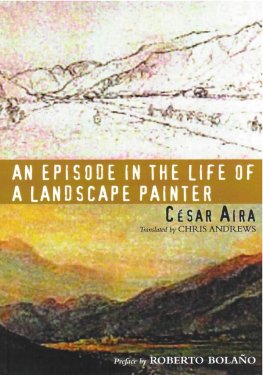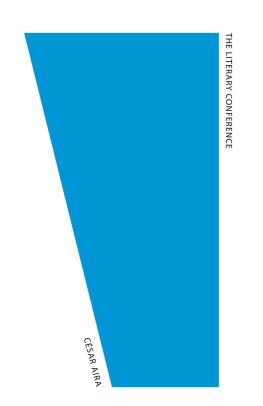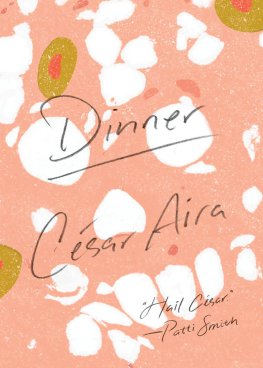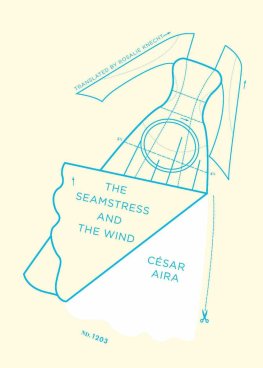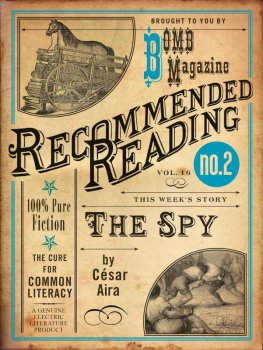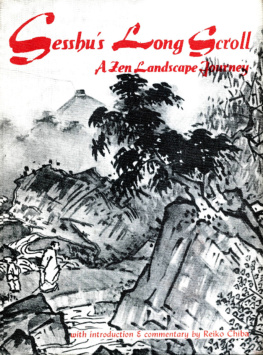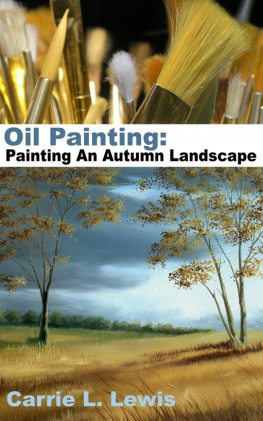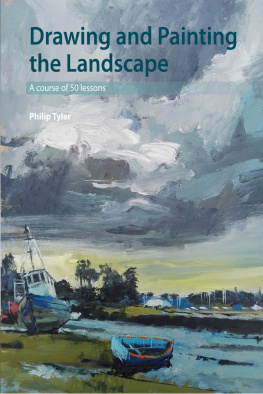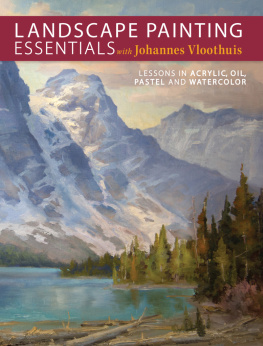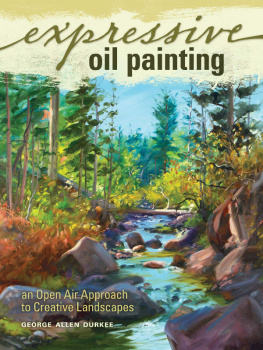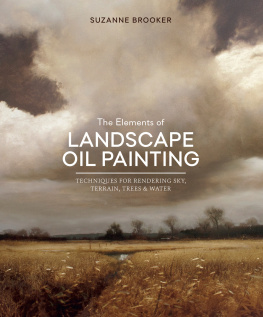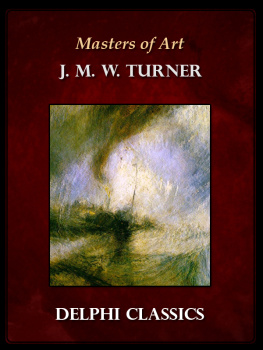Cesar Aira - An Episode in the Life of a Landscape Painter
Here you can read online Cesar Aira - An Episode in the Life of a Landscape Painter full text of the book (entire story) in english for free. Download pdf and epub, get meaning, cover and reviews about this ebook. year: 2006, publisher: New Directions, genre: Prose. Description of the work, (preface) as well as reviews are available. Best literature library LitArk.com created for fans of good reading and offers a wide selection of genres:
Romance novel
Science fiction
Adventure
Detective
Science
History
Home and family
Prose
Art
Politics
Computer
Non-fiction
Religion
Business
Children
Humor
Choose a favorite category and find really read worthwhile books. Enjoy immersion in the world of imagination, feel the emotions of the characters or learn something new for yourself, make an fascinating discovery.
- Book:An Episode in the Life of a Landscape Painter
- Author:
- Publisher:New Directions
- Genre:
- Year:2006
- Rating:3 / 5
- Favourites:Add to favourites
- Your mark:
- 60
- 1
- 2
- 3
- 4
- 5
An Episode in the Life of a Landscape Painter: summary, description and annotation
We offer to read an annotation, description, summary or preface (depends on what the author of the book "An Episode in the Life of a Landscape Painter" wrote himself). If you haven't found the necessary information about the book — write in the comments, we will try to find it.
An Episode in the Life of a Landscape Painter — read online for free the complete book (whole text) full work
Below is the text of the book, divided by pages. System saving the place of the last page read, allows you to conveniently read the book "An Episode in the Life of a Landscape Painter" online for free, without having to search again every time where you left off. Put a bookmark, and you can go to the page where you finished reading at any time.
Font size:
Interval:
Bookmark:
Csar Aira
An Episode in the Life of a Landscape Painter
Preface. The Incredible Csar Aira by Roberto Bolano
If there is one contemporary writer who defies classification, it is Csar Aira, an Argentinean from a town in the province of Buenos Aires called Coronel Pringles, which must, I suppose, be a real place, although it could well have been imagined by its most eminent son, who has given us superlatively lucid portraits of the Mother (a verbal mystery) and the Father (a geometrical certitude), and whose position in contemporary Hispanic literature is equal in complexity to that of Macedonio Fernandez at the beginning of the twentieth century.
Let me start by saying that Aira has written one of the five best stories I can remember. The story, included in Juan Forns anthology Buenos Aires, is entitled "Cecil Taylor." He is also the author of four memorable novels: How I Became a Nun, in which he recounts his childhood; Ema, The Captive, in which he recounts the opulence of the pampas Indians; The Literature Conference, in which he recounts an attempt to clone Carlos Fuentes; and The Crying, in which he recounts a sort of epiphany or bout of insomnia.
Naturally those are not the only novels he has written. I am told that Aira writes two books a year, at least, some of which are published by a little Argentinean company named Beatriz Viterbo, after the character in Borges's story "The Aleph." The books of his that I have been able to find were published by Mondadori and Tusquets Argentina. It's frustrating, because once you've started reading Aira, you don't want to stop. His novels seem to put the theories of Gombrowicz into practice, except, and the difference is fundamental, that Gombrowicz was the abbot of a luxurious imaginary monastery, while Aira is a nun or novice among the Discalced Carmelites of the Word. Sometimes he is reminiscent of Roussel (Roussel on his knees in a bath red with blood), but the only living writer to whom he can be compared is Barcelona's Enrique Vila-Matas.
Aira is an eccentric, but he is also one of the three or four best writers working in Spanish today.
An Episode in the Life of a Landscape Painter
WESTERN ART can boast few documentary painters of true distinction. Of those whose lives and work we know in detail, the finest was Rugendas, who made two visits to Argentina. The second, in 1847, gave him an opportunity to record the landscapes and physical types of the Rio de la Plata in such abundance that an estimated two hundred paintings remained in the hands of local collectors and to refute his friend and admirer Humboldt, or rather a simplistic interpretation of Humboldt's theory, according to which the painter's talent should have been exercised solely in the more topographically and botanically exuberant regions of the New World. But the refutation had in fact been foreshadowed ten years earlier, during Rugendas's brief and dramatic first visit, which was cut short by a strange episode that would mark a turning point in his life.
Johann Moritz Rugendas was born in the imperial city of Augsburg on the 29th of March 1802. His father, grandfather and great-grandfather were all well-known genre painters; one of his ancestors, Georg Philip Rugendas, was famous for his battle scenes. The Rugendas family (although Flemish in origin) had emigrated from Catalonia in 1608 and settled in Augsburg, hoping to find a social environment more hospitable to its Protestant faith. The first German Rugendas was a master clock-maker; all the rest were painters. Johan Moritz confirmed his vocation at the age of four. A gifted draughtsman, he was an outstanding student at the studio of Albrecht Adam and then at the Munich Art Academy. When he was nineteen, an opportunity arose to join the expedition to America led by Baron Langsdorff and financed by the Czar of Russia. His mission was one that, a hundred years later, would have fallen to a photographer: to keep a graphic record of all the discoveries they would make and the landscapes through which they would pass.
At this point, to get a clearer idea of the work upon which the young artist was embarking, it is necessary to go back in time. It was Johan Moritz's great-grandfather, Georg Philip Rugendas (16661742) who founded the dynasty of painters. And he did so as a result of losing his right hand as a young man. The mutilation rendered him unfit for the family trade of clock-making, in which he had been trained since childhood. He had to learn to use his left hand, and to manipulate pencil and brush. He specialized in the depiction of battles, with excellent results, due to the preternatural precision of his draughtsmanship, which was due in turn to his training as a clockmaker and the use of his left hand, which, not being his spontaneous choice, obliged him to work with methodical deliberation. An exquisite contrast between the petrified intricacy of the form and the violent turmoil of the subject matter made him unique. His protector and principal patron was Charles XII of Sweden, the warrior king, whose battles he painted, following the armies from the hyperborean snows to sun-scorched Turkey. In later years he became a prosperous printer and publisher of engravings a natural extension of his skills in military documentation. His three sons, Georg Philip, Johan and Jeremy, inherited both the business and the skills. Christian (17751826), the son of Georg Philip junior, was the father of our Rugendas, who brought the cycle to a close by painting the battles of another warrior king, Napoleon.
Napoleons fall ushered in a "century of peace" in Europe, so inevitably the branch of the profession in which the family had specialized went into decline. Young Johan Moritz, an adolescent at the time of Waterloo, was obliged to execute a swift change of direction. Initially apprenticed to Adam, a battle painter, he began taking classes in nature painting at the Munich Academy. The "nature" favored by buyers of paintings and prints was exotic and remote, so he would have to follow his artistic calling abroad, and the direction his travels would take was soon determined by the opportunity to participate in the voyage mentioned above. On the threshold of his twentieth year, the world that opened before him was roughly mapped out yet still unexplored, much as it was, at around the same time, for the young Charles Darwin. The German painter's Fitzroy was Baron Georg Heinrich von Langsdorff, who, during the crossing of the Atlantic turned out to be so "obdurate and hare-brained" that when the boat arrived in Brazil, Rugendas parted company with the expedition, and was replaced by another talented documentary painter, Taunay. By this decision he spared himself a good deal of grief, for the voyage was ill-starred: Taunay drowned in the Guapor River and in the middle of the jungle Langsdorff lost what few wits he had. Rugendas, meanwhile, after four years of travel and work in the provinces of Rio de Janeiro, Minas Grais, Mato Grosso, Espiritu Santo and Bahia, returned to Europe and published an exquisite illustrated book entitled A Picturesque Voyage through Brazil (the text was written by Victor Aim Huber using the painter's notes), which made him famous and put him in touch with the eminent naturalist Alexander von Humboldt, with whom he was to collaborate on a number of publications.
Rugendas's second and final voyage to America lasted seventeen years, from 1831 to 1847. His industrious journeying took him to Mexico, Chile, Peru, Brazil again and Argentina, and resulted in hundreds, indeed thousands of paintings. (An incomplete catalogue, including oil paintings, watercolors and drawings, numbers 3353 works.)
Although the Mexican phase is the best represented, and tropical jungles and mountain scenes constitute his most characteristic subject matter, the secret aim of this long voyage, which consumed his youth, was Argentina: the mysterious emptiness to be found on the endless plains at a point equidistant from the horizons. Only there, he thought, would he be able to discover the other side of his art This dangerous illusion pursued him throughout his life. Twice he crossed the threshold: in 1837, he came over the Andes from Chile, and in 1847, he approached from the east, via the Rio de la Plata. The second expedition was the more productive, but did not take him beyond the environs of Buenos Aires; on his first journey, however, he ventured towards the dreamed-of center and in fact reached it momentarily, although, as we shall see, the price he had to pay was exorbitant.
Font size:
Interval:
Bookmark:
Similar books «An Episode in the Life of a Landscape Painter»
Look at similar books to An Episode in the Life of a Landscape Painter. We have selected literature similar in name and meaning in the hope of providing readers with more options to find new, interesting, not yet read works.
Discussion, reviews of the book An Episode in the Life of a Landscape Painter and just readers' own opinions. Leave your comments, write what you think about the work, its meaning or the main characters. Specify what exactly you liked and what you didn't like, and why you think so.

